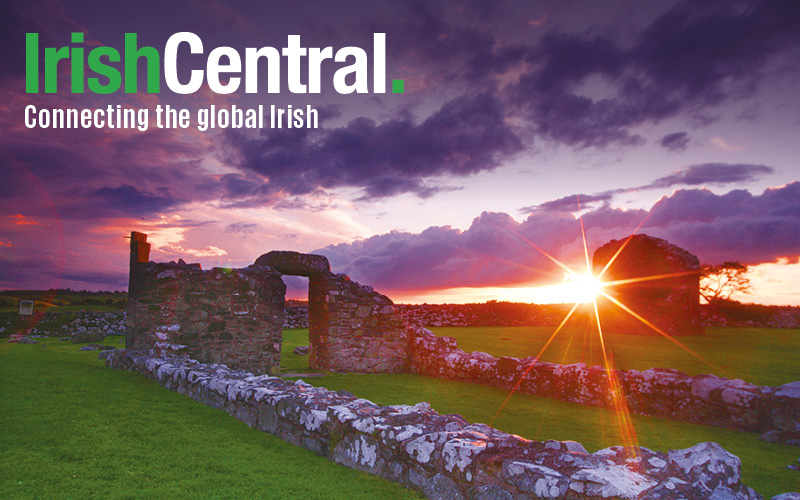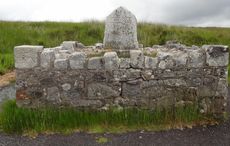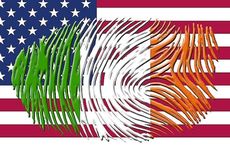So the Easter Rising commemoration has reached its zenith, but what have we learned?
Over the last year, we have heard calls for inclusive attitudes in reexamining the Rising, for nuance and balance, and for a greater appreciation of the subtleties and complexities regarding the events of Easter Week, 1916.
Sadly, what we have mostly got from our government and many members of the media is, in Diarmuid Ferriter’s words, “unhistorical shit.”
Certain aspects of the government’s efforts have been painful and embarrassing in trying to commemorate the Rising without actually mentioning the Rising. “Unhistorical shit” is too generous a term to describe the “Easter Rising” video released by the government last autumn, or the “1916” banner recently hung by Dublin City Council on College Green with images of Henry Grattan, Daniel O’Connell, Charles Stewart Parnell and John Redmond. These are craven efforts to reinvent Irish history on a level that would have embarrassed propaganda departments in some twentieth century totalitarian regimes.
Media commentary has generally been better, in that there at least has been a willingness to discuss the actors and events involved in the Rising.
However, the nuance and rational analysis we have been promised has been absent, or more accurately, has been applied selectively.
The motivation and justification of the rebels in their actions has been thoroughly discussed and dissected, with several writers condemning their use of violence. But, as Michael D. Higgins noted on Monday, “imperial nationalism” has not been “revisited with the same fault-finding edge.”
For example, the decision of the British army to use artillery fire in a condensed urban environment to defeat the rebels has gone without comment. This is most curious, as those who condemn the rebels for causing bloodshed seemingly have nothing to say about the decision that caused the majority of fatalities during Easter Week.
Obviously, one can understand that in the context of the First World War, the British wished to end the rebellion as swiftly as possible. But given that the rebels were greatly outnumbered, tactically naïve and essentially had imprisoned themselves in various sites across Dublin, it is legitimate to ask whether shelling was absolutely necessary to bring about a quick surrender.
It should be borne in mind that all of the civilians who died in the shelling were subjects of the British crown, and therefore, entitled to some consideration for their well-being on the part of their own government. We also might wonder whether artillery fire would have been the response if socialists had seized buildings around London as part a proletarian revolution in 1916.
Indeed, the decision to use artillery in Dublin should be viewed in light of the Prussian siege of Paris in 1870. During the siege, one of the Field Marshals, Count von Blumenthal, repeatedly refused to bow to pressure to use artillery fire on Paris to force the French to surrender.
Von Blumenthal was no lily-livered Francophile. He wrote that the French must be “be trodden under foot and annihilated.” His opposition to the use of artillery was partly out of concern for his own men (that those operating Prussian guns would be exposed to returning French fire), but he also felt that those who advocated she+lling were “bloodthirsty” and that even if a bombardment succeeded “it will be a turning point of our fortune and successes….we [will] destroy ourselves.”
While the circumstances of Paris in 1870 and Dublin in 1916 were not the same, there are certainly enough similarities to wonder why Prussian commanders were hesitant to inflict shelling on the capital city of a country they were at war with, while British commanders had little compunction about opening fire on their own people.
The fact that these hard questions are only asked of one side of the Rising can be attributed to the deep legacy of British colonization in Ireland. Despite almost a century of independence, there is still a tendency within certain circles to be skeptical of those who identified themselves as Irish nationalists while uncritically accepting the contemporary views and opinions that many people in Britain had regarding Ireland.
A good example of this one-sidedness can be seen in an op-ed written by Barry Kennerk in last weekend’s New York Times.
Kennerk’s main point was that Irish nationalists in the twentieth century had constructed a sense of Irish identity that rejected all connections with Britain, and that many people who lived in Ireland before the Rising embraced a sense of Britishness that would have surprised their descendants.
Kennerk is, of course, correct regarding the artificial nature of Irish identity as promoted by the Irish political establishment over the course of the twentieth century.
The problem is that his article implies that the sense of Britishness that many people in Ireland embraced before the Rising was somehow authentic, organic and natural, and not itself the result of indoctrination and deliberate efforts to create a sense of Irishness that fit within a wider British identity.
Of course, the elephant in the room when it comes to commemorating the Rising is the Troubles – or namely the belief that the events of 1916 led Ireland on the inevitable road to thirty years of mayhem in the latter half of the twentieth century.
Now, anyone who has ever read a book about the eruption of violence in August 1969 will realize that what happened in Northern Ireland had nothing to do with Pearse, Connolly and company.
A couple of facts will highlight this. The first sectarian murders of the Troubles were carried out by the UVF in 1966. The first bombings were carried out by the UVF in April 1969. The first member of the RUC killed in the line of duty was shot by a loyalist gunman in October 1969, and the first two people convicted of terrorist offenses by the Diplock courts in 1972 were members of loyalist paramilitaries. Listing these facts is not an attempt to say blame for the Troubles lies solely with the unionist community, but rather to show that the view, widely held among the Irish public, that the Northern Irish conflict began as an IRA campaign to reunite Ireland is deeply flawed.
Certainly the IRA presented themselves as the legitimate heirs of the Easter rebels once the conflict began – but that is something very different from saying that the legacy of 1916 caused the Troubles. After all, Patrick Pearse saw himself as continuing a legacy of Irish heroism dating back to Cúchulainn – but no one is arguing that the Táin Bó Cúailgne led directly to the Easter Rising.
Indeed, when it comes to analyzing the link between 1916 and 1969, it requires a particularly selective viewpoint to insist that the Dublin uprising ultimately caused the Troubles. The reality is that it was the behavior of the British Army during Operation Demetrius in 1971, during the Ballymurphy massacre and above all during Bloody Sunday that gave the IRA legitimacy and widespread support among the nationalist community in Ulster, not what happened on the streets of Dublin over 50 years earlier.
In short, the call for a more complex understanding and appreciation of what happened in Dublin in April 1916 has largely gone unheeded, and instead has been used to rehash dubious arguments from the previous forty years, written to reinforce contemporary ideological positions rather than explore our country’s past.
The short military campaign waged by the rebels began and ended one hundred years ago. The intellectual battle they were trying to fight is still very much ongoing.
---
Caoimhín De Barra is the Assistant Professor for Irish History and Culture. He joined the Drew University faculty in the fall of 2014. A native of Blarney in Cork, Ireland, De Barra studied History and English at University College Cork before earning his Ph.D. from the University of Delaware. His doctoral research focused on how nationalists in Wales and Ireland defined themselves in relation to their Celtic “other” at the turn of the twentieth century, studying each other and borrowing ideas from one another in seeking to forge new political and cultural movements in their respective nations. His scholarly areas of interest are in the field of identity formation, especially the development and evolution of national and regional identities in Ireland, Britain and Europe, on the basis of different accents, dialects and languages. He also has a strong interest in comparative and transnational history. His published research has compared efforts to revive the Hebrew and Irish languages, as well as the influence of the Welsh language on the development of Irish cultural nationalism.




Comments